Funded researchers: Dr. Leonie Kertess, Dr. Martin Stacho, Dr. Leonid Ryvkin, Dr. Linda Leskau & Dr. Stella Maragkaki
Dr. Jannis Köhler
Mechanical Engineering
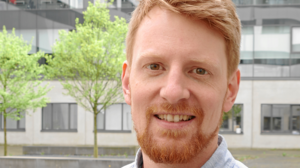
The ongoing trend towards miniaturization reflects the constant increase of performance and multifunction integration in technical systems and leads to new innovative technologies and solutions. Microfluidics is one of those areas that has developed strongly in recent years. It provides complete laboratory analysis and diagnostics of liquid samples and reagents on an area not exceeding a matchbox. Therefore, diagnostic and therapeutic measures for diseases can be integrated in tiny devices and, for instance, enable the decentralized care of patients. To achieve this, liquids have to be transported, mixed, and controlled in a precise manner within microchannels and reaction chambers by integrated microdevices. Light plays an important role for manufacturing and actuation of these microdevices and can be applied for further improving microfluidic systems regarding new capabilities and higher performance density.
My Gateway Fellowship project aims to develop and characterize an optical based microdevice in the field of microfluidics. More precisely, a micropump will be generated, which will allow an efficient transport of liquids through microchannels and enable rapid adjustments of the flow direction and strength due to light actuation.
The project will be carried out at the University of Queensland, Australia, in collaboration with Prof. Halina Rubinsztein-Dunlop. She was the first to experimentally analyze the transfer of optical torque to particles by a laser and, due to her long standing experience, will give important support in the field of laser micromanipulation and optical driving.
Dr. Leonie Kertess
Biology and Biotechnology
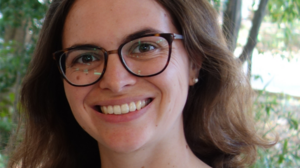
My GF project “Can Hydrogenase Mechanisms be Unified?“ is motivated by the persisting energy problem of our society. Currently, energy is mainly consumed from non-renewable fuels sources which produce a number of environmental hazards from extraction to use. The use of renewable energy sources is limited due to the current lack of storage solutions. It is envisaged that molecular hydrogen (H2) may serve as a CO2 neutral energy carrier since its combustion leaves only water behind. However, energy storage in form of hydrogen needs to date a set of catalysts which are based on precious metals and therefore limit the sustainability of this route of energy storage. This is where my project comes into play since I will work with hydrogenases, metalloenzymes which are able to convert H2 to energy and protons acting as a biocatalyst. These enzymes rely on earth abundant metals (iron and nickel) and have been present in nature for millennia. It is believed that a detailed understanding of their H2 turnover mechanism will contribute to the design of sustainable catalysts based on abundant metals.
Nature has evolved two phylogenetically distinct biocatalysts ([FeFe]- and [NiFe]-hydrogenases) for the production and oxidation of H2. There is growing evidence that the underlying mechanism of hydrogen activation involves a “Frustrated Lewis Pair” mechanism for both [FeFe]- and [NiFe] hydrogenases. The evidence is particularly clear for [FeFe]-hydrogenases, whereas for [NiFe] hydrogenase open questions remain. Therefore a set of [NiFe]-hydrogenases variants will be subjected to biochemical and biophysical characterization including solution assays, protein film electrochemistry (PFE), FTIR spectroscopy and X-ray structure analysis. My goal in the outlined project is to make substantial contributions to the field of sustainable hydrogen catalysts by comparing and unifying the underlying H2 turnover mechanisms in nature.
My host Prof. Fraser Armstrong, a Fellow of the Royal Society and academic at the University of Oxford, is perceived as pioneer in the field of protein film electrochemistry (PFE) which allows for studies of complex electron-transfer and catalytic reactions in redox-active proteins. This makes him a leading researcher in the field of metalloenzymes for studying redox-active enzymes such as hydrogenases with the aim of obtaining fundamental chemical insights for the development of renewable energy technologies. This is reflected in 90+ publications in the last decade (total H-factor 70). His work was acknowledged by several awards comprising the Joseph Chatt Award by the Royal Society of Chemistry (2010) and the Davy Medal of the Royal Society (2012).
Dr. Martin Stacho
Neuroscience
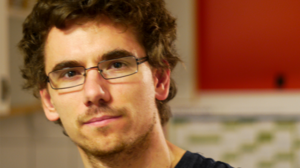
Every day, our brain has to provide us information about ourselves and about people around us and somehow our brain has to navigate us to our daily targets. But how is this accomplished? How do we remember, who we are and where we are? The hippocampus is a structure in our brain which is especially important for our memory and spatial navigation. Dysfunction of hippocampus is associated with amnesia and diseases such as Alzheimer dementia or epilepsy. Thus, to understand how the hippocampus works is an essential goal of neuroscience with clinical implications as well as implications for our daily life.
The hippocampus can represent different events using distinct neuronal populations. The specific neuronal populations emerge due to functional changes in the connectivity among the neurons. How exactly the memory trace is created and eventually transferred to other areas of the brain remains enigmatic. Interestingly, neurons that represent a new event are often reactivated during high-frequency synchronous activity of neurons occurring during waking immobility or sleep. These oscillations might therefore play a crucial role in long-term memory formation.
In my Gateway Fellowship project, I will therefore, study what kind of neuronal processes are associated with these oscillations. Using two-photon imaging techniques, I will image and influence the activity of neurons in acute hippocampal slices in vitro during such oscillations. These manipulations will help us to better understand the causalities between the oscillations and the network changes. Moreover, these in vitro experiments should help us to develop a tool which could be applied in vivo in future studies.
I believe that understanding the modifications of the circuitry elicited by the high-frequency oscillations will shed light on the emergence of the memory traces and the future in vivo studies would then provide an unequivocal link between these cellular mechanisms and the behavior.
The research will be conducted in the Laboratory of 3D Functional Network and Dendritic Imaging of Mr. Balázs Rózsa MD PhD at the Institute of Experimental Medicine of Hungarian Academy of Sciences in Budapest (Hungary). The researchers from this laboratory are experts in imaging the neuronal activity. They developed new fast high-resolution in vivo 3D imaging methods, which is an important step towards the visualization and understanding the network activity in the brain of a living animal. The rich expertise of this team makes Budapest a perfect place to perform the above mentioned experiments.
Dr. Leonid Ryvkin
Mathematics
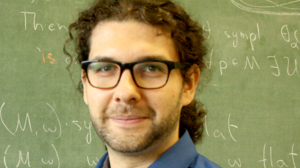
The theme of my Gateway Fellowship is the investigation of multisymplectic manifolds under the mentorship of Prof. Frédéric Hélein at the Université Paris-Diderot. Paris in general, and the Diderot university in particular have a very rich and pluralistic mathematical infrastructure, as well as a long-standing and vivid seminar culture.
One of the main reasons for the investigation of multisymplectic geometry is to formulate a theory which is interpretable in a way useful for physics.
Multisymplectic Geometry is an emerging field at the intersection of Differential Geometry and Topology. It originated in the search for a Hamiltonian formulation of classical field theory, generalizing the way symplectic geometry models classical mechanics. Roughly speaking, differential geometry studies how the curvedness of shapes (spheres, tori, cones, saddles) influences their geometric behavior, whereas topology studies properties of shapes unchanged by continuous deformation (i.e. stretching and bending, but not cutting or gluing). Surprisingly at first sight, methods from differential geometry can be used to investigate topological properties and vice versa.
The goal of this Gateway Fellowship project is to see how much topological information can be extracted from a 2-plectic structure (a special case of a multisymplectic one) by purely differential-geometric means, relate this information to dynamics and find out how useful this information can be from a physicists perspective.
The inquiry will rely on pen-and-paper computations in the realm homology and spectral sequences. For guidance, we will use geometric intuition and higher algebraic structures, as the equations are too involved for a purely calculational treatment.
Dr. Linda Leskau
Philology
An observation of Disability Studies, which considers disability a cultural phenomenon, is that disabled figures have been in the focus of literary texts since antiquity. Despite their frequent appearance, they were either overlooked by Literary Studies or merely interpreted metaphorically and thus their multiple functions for literary texts were not taken seriously.
The focus of my GF project is on a specific form of disability, the lack or limitation of limb use. This form of disability is particularly striking in the narrative and dramatic work of the Austrian writer Thomas Bernhard, in which the figures are often explicitly referred to as ‘cripples’. These many ‘cripples’ in wheelchairs or with prostheses and crutches in Bernhard’s work have been registered in research but have rarely been adequately analyzed. The few studies on the motif of ‘crippling’ in Bernhard’s work mostly agree that the figure of the ‘cripple’ refers to a topos of research, namely to stagnation, immobility and futility of existence. The aim of the project is to demonstrate that such interpretation of the ‘cripple’ in Bernhard’s work falls short and that the functions of ‘crippling’ are more complex and fundamental to the understanding of his work. Based on observations of Disability Studies, it will be argued that Bernhard’s texts act as prostheses for the ‘crippling’ they represent: Like the physical prosthesis, they emphasize the ‘problem of crippling’ and at the same time try different solutions such as healing or compensation. Special attention will be paid to the extent to which Bernhard’s work introduces ‘crippling’ not only as a negative category of difference or a search for narrative healing and normalization but offers subversive alternatives to such representations.
The project is being carried out at the German Department at the University of Cincinnati, in collaboration with Assistant Professor Tanja Nusser. She is a renowned expert in the field of Disability Studies. To a large extent, the foundations of Disability Studies are theoretical reflections of Gender as well as Postcolonial Studies. Nusser has relevant research in all of these fields. She has published influential and innovative articles and books on the subject of disability, gender and race, which form the methodological and theoretical basis of my research project.
Dr. Stella Maragkaki
Mechanical Engineering
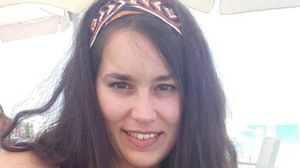
Ultrafast lasers have become an extraordinary tool for processing any kind of materials due to its unique characteristics. This opens the possibility to induce gentle modifications on the surface obtaining complex micro- and nanoscale surface structures, which are often found to have unique properties and cannot be realized by other, non-laser-based methods.
In particular, laser-induced periodic surface structures (LIPSS) enable the alteration of the physical characteristics of the material such as the optical and mechanical properties (e.g. surface wettability). Although LIPSS have been studied for almost four decades, the physical mechanisms contributing in this phenomenon are still not clear in literature. Understanding them is the key to control the LIPSS formation and their feature characteristics in different materials.
The aim of my Gateway project is to move a step toward understanding the physical background of LIPSS, particularly regarding the size of their period, a key factor which can reveal much valuable information. For this purpose, I aim to realize a new approach under the support of the GF fellowship and the host supervisors.
The research will be conducted in the Ultrafast Laser Nano- and Micro- Processing laboratory (ULNMP), which is part of the Institute of Electronic Structure and Laser (IESL), Foundation of Reasearch and Technology-Hellas (FORTH). The host supervisor, Dr. Emmanuel Stratakis, who is the leader of the ULNMP lab, has an excellent publication record including 6 cover pages, in refereed scientific journals and he has received ~5800 total citations (h-index 41, google scholar). Dr. Stratakis is the Greece Expert for the Horizon 2020 committee configurations on: Nanotechnologies, Advanced materials, Biotechnology, Advanced Manufacturing and Processing.


